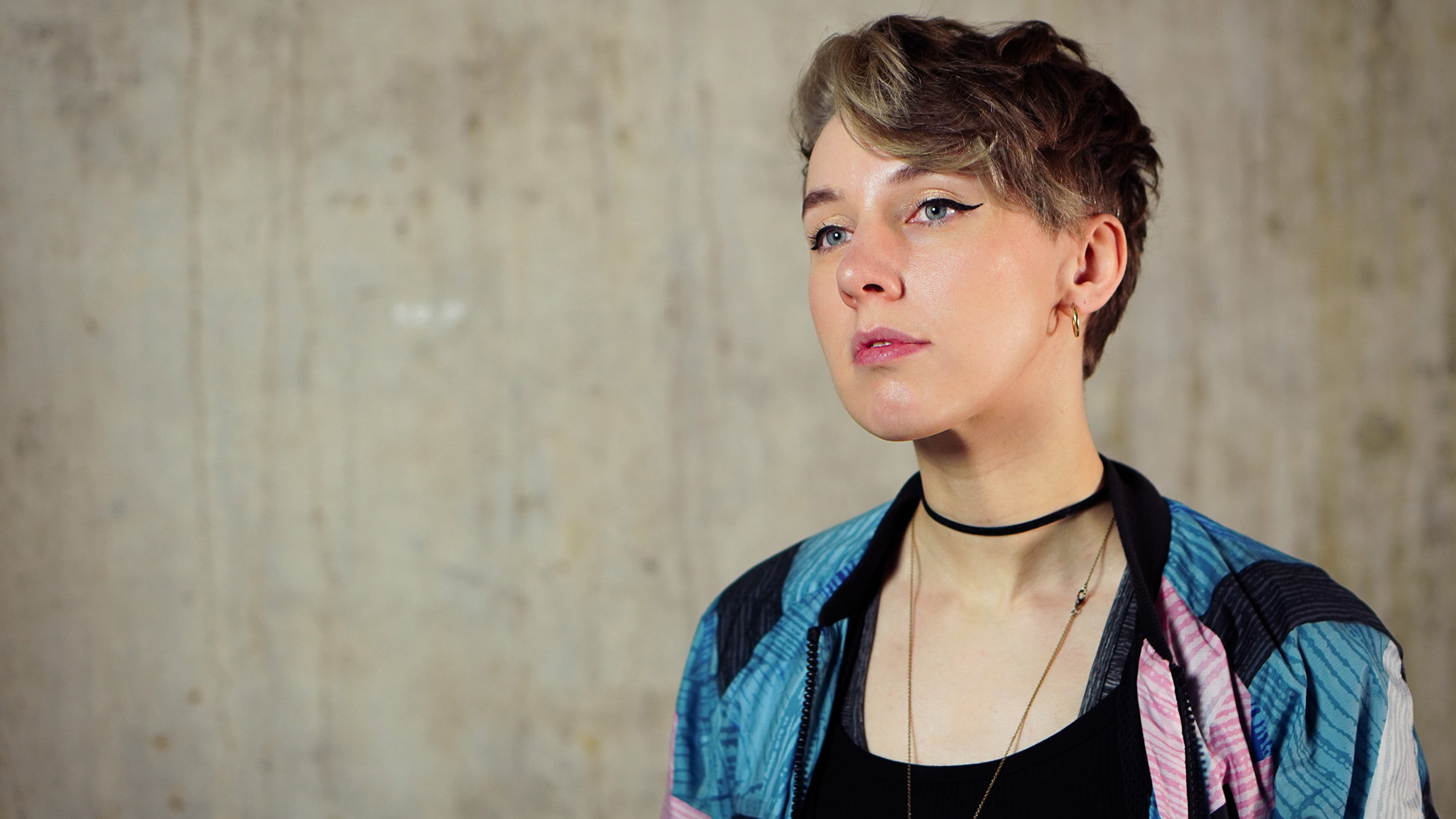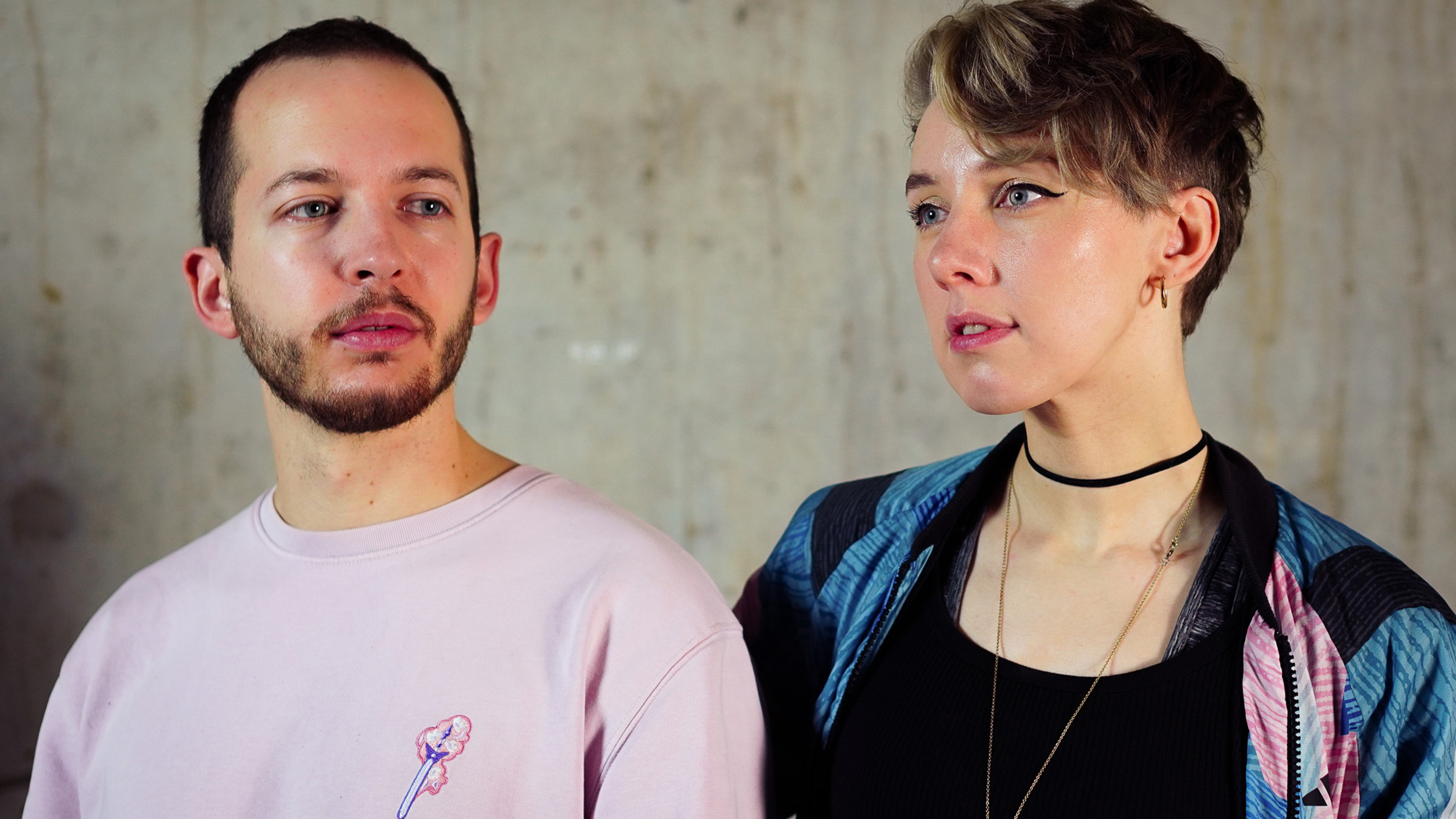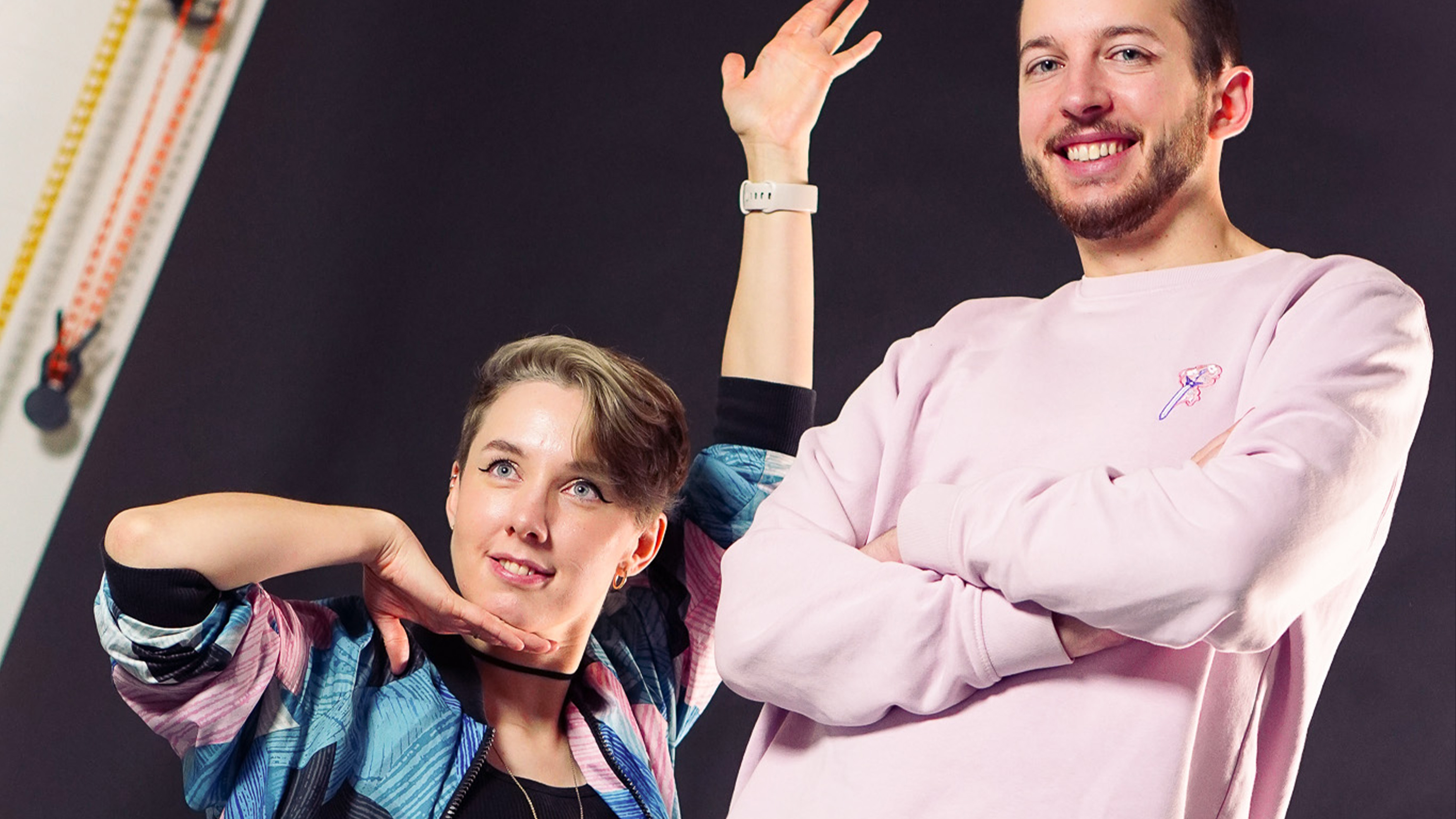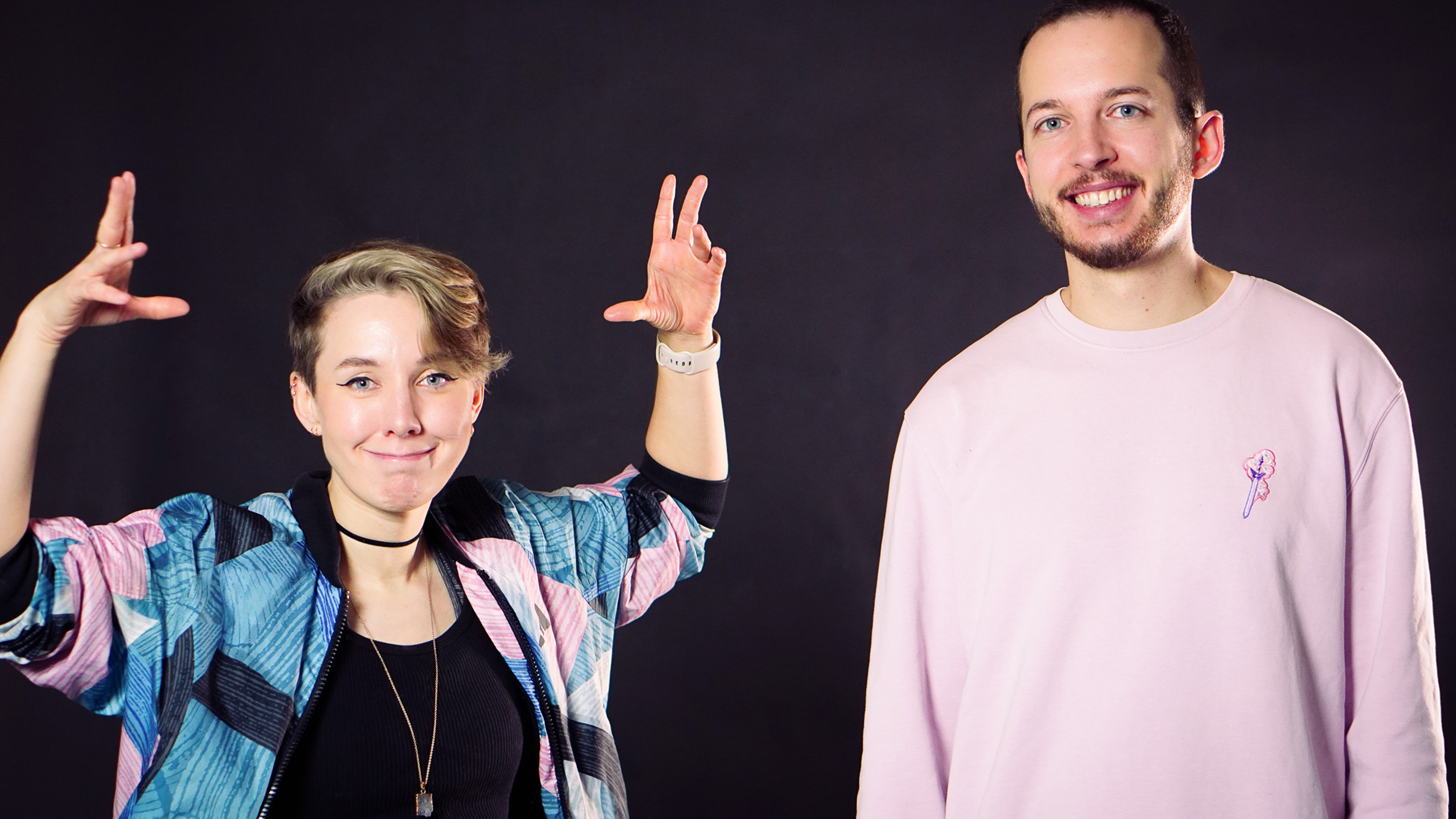Leaving a stable job to pursue your dreams can be a daunting decision filled with uncertainty and fear. For some creatives, the allure of starting a game studio and bringing an artistic vision to life is too strong to resist.
For video game artist Anna Hollinrake the temptation of following her "North Star" was too much. Along with friend and Pavle Mihajlović, Hollinrake quit her job and co-founded Electric Saint to make video games no one else is making. (Get some more advice by reading our guide to 'How to start a studio', we also ask, 'Should you go into business with your mates?')
You may have heard of Hollinrake, the art director, illustrator and games developer was the 2017 BAFTA Breakthrough Brit award-winner and art lead at Mediatonic, the studio behind the massively popular Fall Guys – that hysterical jelly-bean obstacle course racer. Hollinrake, then, has a lot to lose from giving up the security of a studio job to be her own boss. She also has everything to win.


The truth of what Hollinrake had committed herself to began in February when Electric Saint became a reality and "may have been the most intense month and a half of my life," confesses the artist.
But let's wind back a little. Hollinrake left Mediatonic in August 2022 with the aim of easing into this life of new responsibilities. But winning funding from the London Games Accelerator program and the UK Games Fund meant things became very serious, very fast. "Everything kind of really hit the ground running," laughs Hollinrake.
Setting up a studio felt like the most natural and clear path for the pair, shares the artist as she reflects on taking the decision, telling me: "You know, it's scary and you don't really want to do it alone".
It's scary and you don't really want to do it alone
Anna Hollinrake
But this had been a long-standing aspiration since 2017. Hollinrake and her co-found waited until they felt ready, acquiring the necessary leadership and publishing skills along the way. Before she made the leap Hollinrake confesses to the same emotions and self-doubts many artists will recognise, feeling like she "needed more leadership experience," and "knew that I needed to have more experience on the publishing side of things," but ultimately she drew on her know-how to settle the nerves.
Get the Creative Bloq Newsletter
Daily design news, reviews, how-tos and more, as picked by the editors.
Learning the skills required to launch a game studio is a process that happens naturally over time, believes Hollinrake. It's an accumulation of experiences, conversations, and exposure to different aspects of game development. Moving from a purely creative role to the publishing side of things on Fall Guys enabled her to absorb new skills, learning more about marketing and branding vital to modern game development.
Having previously been in a role where she "messed around in-engine and 3D software", I soon realise Hollinrake has an endearing tendency to be self-deprecating, a new opportunity opened her eyes to the broader game-dev process. The truth is, a new role at Mediatonic came with broader responsibilities, she "was suddenly having to have conversations about key art and game event art, and how best to communicate the intent of the game".

For Hollinrake her path to being the boss came in a traditional way, hoovering experience at a studio before going it alone. "Put yourself forward for everything, even if you don't think that you're quite at the point yet," she advises. I ask her if this is the best way to learn how to start a game studio, but she stresses there's no one-size-fits-all approach.
"Everyone's journey is different and the way I did it is going to be miles different to the way you have to do it now," she tells me. Each person's journey is unique, shaped by their background and circumstances. In Hollinrake's case, studying game art and joining a studio right away felt like the obvious choice at the time.
The artist acknowledges that the landscape has changed, with game design degrees now providing a closer integration of programming and art. Previously she'd be encouraged to graduate and join a studio or go freelance, there wasn't that drive for entrepreneurism we see now. With developer tools like Unreal Engine 5 and Unity easier to access and even Epic Games' new Unreal Editor for Fortnite Editor is set to usher in a new generation of artists and game devs, the options to go it alone are more varied than ever before.
However, Hollinrake stresses the importance of confidence and gaining experience through teamwork before venturing into independent game development. For her, the contacts, friendships and learned knowledge that quietly builds, almost unexpectedly, while working in a studio, is important.

So it's day one at Electric Saint, Hollinrake's the boss, she sets the agenda with a blank sheet and a game to make, where does she begin? Script, concept art, key art, design, music? Well, kind of all of it all at once.
"For me, it's a feeling. It's a feeling for what I want to create," she says, revealing her process initially is driven by an emotional connection, which Hollinrake says is perhaps due to her musical background, "My dad's a guitarist," she reveals. Speaking with Hollinrake, I come to understand how thoughts and ideas tumble from her, she doesn't hold back and jumps to connections. Everything in her life appears to jumble and influence her approach to art and game design.
"I really zero in on the feeling I want to create. What kind of sense of movement I want and that also influences the visuals," she says, adding excitedly: "I love the idea of having this, kind of, waterwheel of art and design."
She explains that her approach to game development is a combination of both art and design, driven by the feeling she wants to create in the game. This approach reinforces the core themes and the game loop through the synergy between art and design. Everything stacks, interacts and compliments; the visual aesthetics, player interactions, and UI elements all play a crucial role in creating the atmosphere.
"It's a reinforcing of the game design through the art," says Hollinrake before digging deeper into her 'waterwheel' approach: "It's thinking about the design, like loop or what what the player is doing, but then how asking 'how can I artistically reinforce that so how can I use lighting?' or 'How can I really make sure that the gameplay has a lot of momentum?' and 'How do I set up the environment to support that?' Whether that's a feeling of peace and tranquillity or a feeling of movement and dynamism."

Taking on multiple roles in the studio was inevitable during the early stages. As the co-founder of Electric Saint, Hollinrake assumed responsibility for art and game design, ensuring that the studio's vision and benchmarks are met. This arrangement will evolve over time as the studio grows and more team members come on board. The initial phase is about finding the right direction and exploring what works and what doesn't.
Now there's no-one above her, no art director to wind in her ideas, Hollinrake utters the "leadership" word. It's on her to make things work and reel in those wilder ideas. It's here we come full circle in our chat, as she draws on her experiences and settles on the belief now is the right time.
"It's a new kind of pressure," she says excitedly, embracing the challenge. "With leadership I think something internal has to happen, where you accept that you're not going to get everything right. But if you fuss over everything and stress over everything, nothing's going to happen, and you kind of have to just take the leap and dive into the unknown."
Visit the developer's website to contact Electric Saint. If you're an aspiring game developer or gaming artist, read our guides to the best laptops for game development, the best laptops for 3d modelling, and read our advice for making a better game.

Thank you for reading 5 articles this month* Join now for unlimited access
Enjoy your first month for just £1 / $1 / €1
*Read 5 free articles per month without a subscription

Join now for unlimited access
Try first month for just £1 / $1 / €1

Ian Dean is Editor, Digital Arts & 3D at Creative Bloq, and the former editor of many leading magazines. These titles included ImagineFX, 3D World and video game titles Play and Official PlayStation Magazine. Ian launched Xbox magazine X360 and edited PlayStation World. For Creative Bloq, Ian combines his experiences to bring the latest news on digital art, VFX and video games and tech, and in his spare time he doodles in Procreate, ArtRage, and Rebelle while finding time to play Xbox and PS5.
